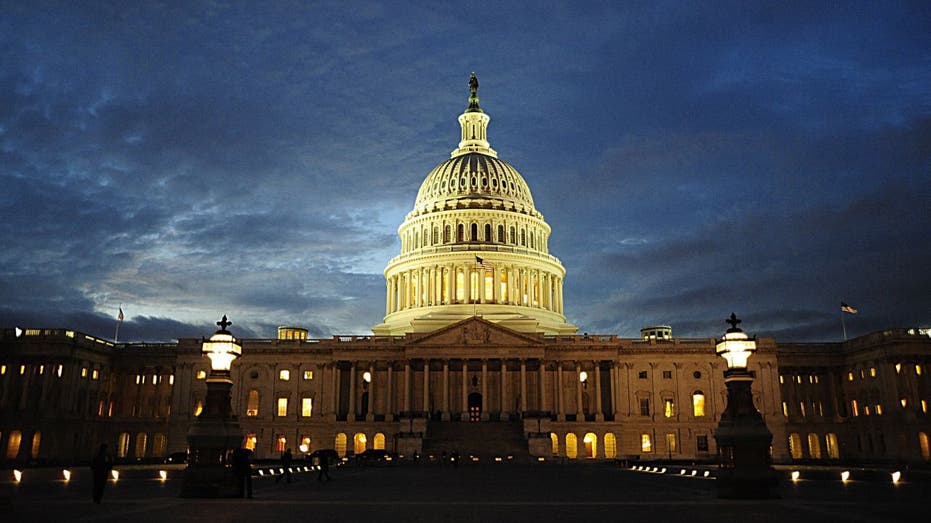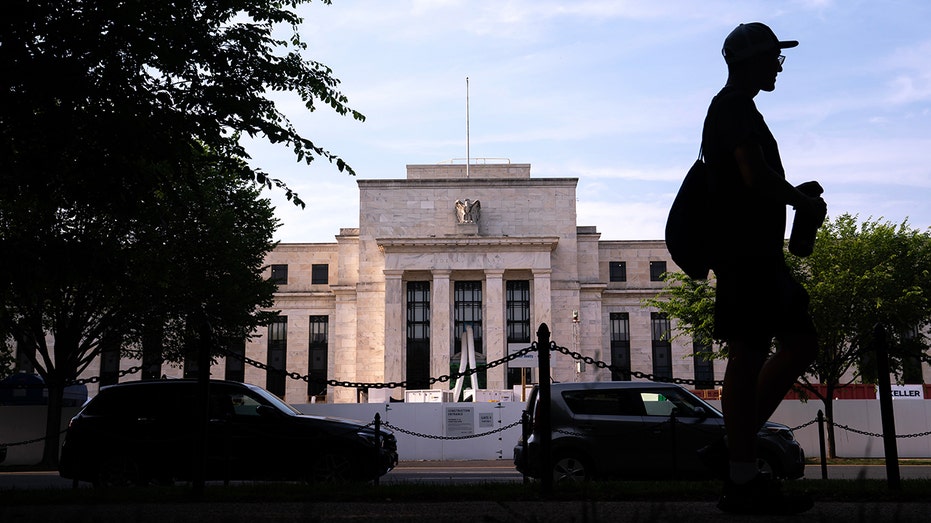
Rep. Matt Rosendale, R-Mont., joined ‘Cavuto: Coast to Coast’ to discuss the GOP’s ongoing struggles to pass a defense spending bill as a government shutdown looms.
The U.S. government on Friday posted a $1.695 trillion budget deficit in fiscal 2023, a 23% jump from the prior year as revenues fell and outlays for Social Security, Medicare and record-high interest costs on the federal debt rose.
The Treasury Department said the deficit was the largest since a COVID-fueled $2.78 trillion gap in 2021. It marks a major return to ballooning deficits after back-to-back declines during President Joe Biden’s first two years in office.
The deficit comes as Biden is asking Congress for $100 billion in new foreign aid and security spending, including $60 billion for Ukraine and $14 billion for Israel, along with funding for U.S. border security and the Indo-Pacific region.
FED’S POWELL WARNS SLOWER ECONOMIC GROWTH MAY BE NEEDED TO COOL HIGH INFLATION
The big deficit, which exceeded all pre-COVID deficits, including those brought about by Republican tax cuts passed under Donald Trump and from the financial crisis years, is likely to enflame Biden’s fiscal battles with Republicans in the House of Representatives, whose demands for spending cuts pushed the U.S. to the brink of default in early June over the debt ceiling.
A deal to avoid a government shutdown over deeper spending cut demands from Republican hardliners led to the ouster of U.S. House of Representatives Speaker Kevin McCarthy, and the party is still divided over who should lead them, which is expected to make negotiations ahead of a new fiscal deadline in mid-November more difficult.

The dome of the U.S. Washington, D.C. (Karen Bleier/AFP via Getty Images/File / Getty Images)
For September, the final month of the fiscal year, the deficit fell to $171 billion from $430 billion in September 2022.
“Falling revenues are a significant contributor to the 2023 deficit, underscoring the importance of President Biden’s enacted and proposed policies to reform the tax system,” Treasury Secretary Janet Yellen and Office of Management and Budget Director Shalanda Young said in a joint statement.
The fiscal 2023 deficit would have been $321 billion larger, but was reduced by this amount because the Supreme Court struck down Biden’s student loan forgiveness program as unconstitutional. The ruling forced the Treasury to reverse a pre-emptive charge against fiscal 2022 budget results that increased that year’s deficit.
US ECONOMY LITTLE CHANGED IN RECENT WEEKS: FED’S BEIGE BOOK
The fiscal year 2022 deficit was $1.375 trillion.
Taking into account the two one-off adjustments, last fiscal year’s deficit would have been closer to $1 trillion and this year’s closer to $2 trillion, a Treasury official said.
The 2023 deficit marks an abrupt end to two years of falling deficits for Biden as COVID-19 spending faded. The U.S. deficit peaked in fiscal 2020 at $3.13 trillion as the sharpest downturn since the 1930s severely constrained tax revenues while spending on unemployment benefits, direct payments to consumers and aid to businesses peaked.

The U.S. government’s budget deficit surged to an all-time high of $1.7 trillion for the first six months of this budget year, nearly double the previous record, as another round of economic-support checks added billions of dollars to spending last m (AP Photo/J. Scott Applewhite/File / AP Images)
But the Congressional Budget Office has warned that based on current tax and spending legislation, U.S. deficits will approach COVID-era levels by the end of the decade, reaching some $2.13 trillion in 2030 as interest, health and pension costs mount.
For the 2023 fiscal year, total revenues fell $457 billion, or 9% from fiscal 2022, to $4.439 trillion, largely due to a drop in non-withheld individual income tax payments amid a worse performance in stocks and other financial assets as interest rates rose.
Other revenue declines included a $106 billion drop in Federal Reserve earnings as interest paid on bank reserves ate up any portfolio income.

A pedestrian passes the Marriner S. Eccles Federal Reserve building in Washington, D.C. (Nathan Howard/Bloomberg via Getty Images/File / Getty Images)
Fiscal 2023 outlays fell $137 billion, or 2% from the prior year to $6.134 trillion. Outlays would have been more modest were it not for large increases in spending on retirement and healthcare benefits for the elderly and in debt service costs.
Social Security spending rose 10% to $1.416 trillion due to cost of living adjustments for inflation, and spending for the Medicare senior healthcare program rose 4% to $1.022 trillion.
Interest costs on the more than $33 trillion in federal debt also rose sharply, up 23% to $879 billion, a record. Net interest payments, excluding intragovernmental transfers to trust funds, rose 39% to $659 billion, also a record, according to a Treasury official.
Gross interest payments amounted to 3.28% as a share of gross domestic product, the highest since 2001, and the net share at 2.45% was the highest since 1998, the official said.
CLICK HERE TO GET FOX BUSINESS ON THE GO
Interest rates have soared over the last year and a half as the Federal Reserve jacked up borrowing costs to slow inflation. The average interest cost on the Treasury’s outstanding debt was 2.97% last fiscal year, up from 2.07% the year before.

 Latest Breaking News Online News Portal
Latest Breaking News Online News Portal




